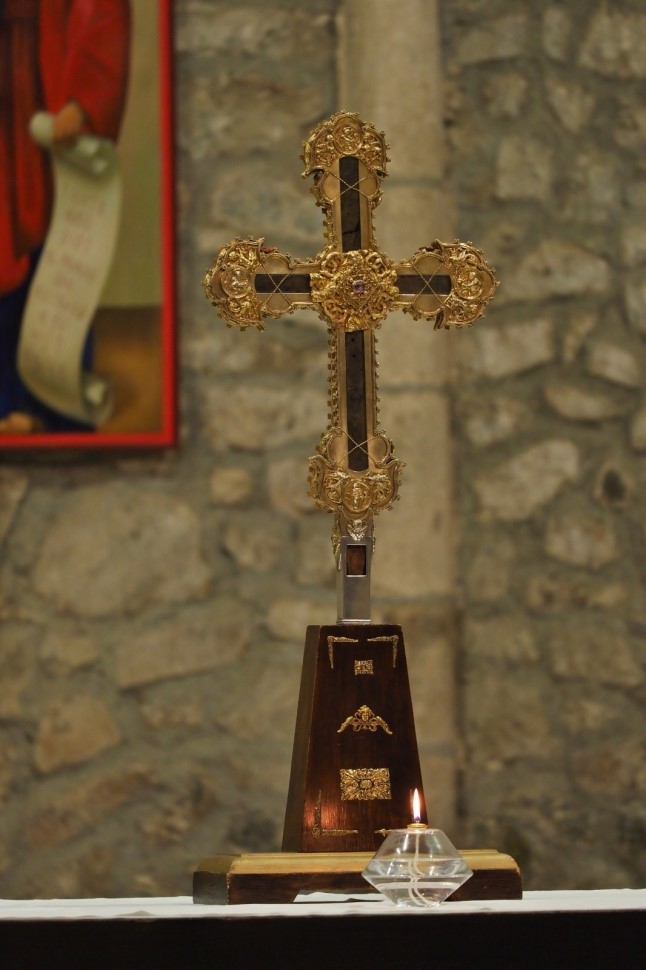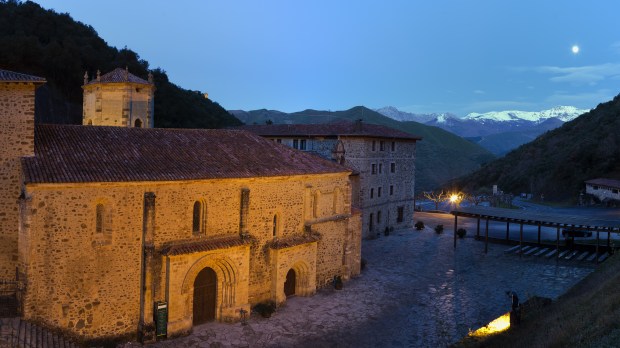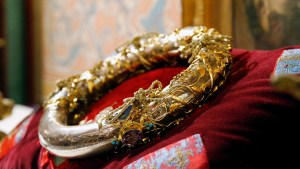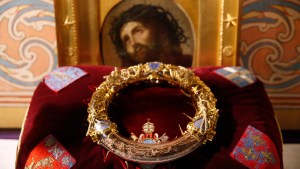Cantabria, in northern Spain, is home to one of the most cherished relics in Christianity. According to tradition, the monastery houses the largest preserved fragment of the Lignum Crucis, the (allegedly) True Cross upon which Christ was crucified.
On September 23, 1512, Pope Julius II granted the Monastery of Santo Toribio de Liébana the privilege of celebrating its own Jubilee Year, acknowledging the importance of this relic. By so doing, he was turning the monastery into one of the five holy places of Christianity (along with Rome, Jerusalem, Santiago de Compostela, and Caravaca de la Cruz), allowed to celebrate a Holy Jubilar year every seven years.
St. Helena and the Holy Cross
The True Cross, tradition claims, was found by St. Helena of Constantinople, the mother of Emperor Constantine, in Jerusalem around the year 326. Ordering the demolition of a Roman temple that stood on Golgotha and the excavation of a deposit where the Romans disposed of crosses after prisoners were executed, she recognized the True Cross (the Golden Legend explains) when a dead man came back to life after coming in contact with it. The text reads:
It was so that Adrian the emperor had do make, in the same place where the cross lay, a temple of a goddess, because that all they that came in that place should adore that goddess, but the queen did do destroy the temple. Then Judas made him ready and began to dig, and when he came to twenty paces deep he found three crosses and brought them to the queen, and because he knew not which was the cross of our Lord, he laid them in the middle of the city and abode the demonstrance of God; and about the hour of noon there was the corps of a young man brought to be buried. Judas retained the bier, and laid upon it one of the crosses, and after the second, and when he laid on it the third, anon the body that was dead came again to life.
As Mónica Arrizabalaga explains in her article for ABC, Lady Egeria’s Itinerarium minutely describes how the Holy Cross’ relic was already taken out in procession on Good Friday in the late 4th century. Numbers 74 and 75, The Veneration of the Cross, read as follows:
Then a chair is placed for the bishop in Golgotha behind the Cross, which is now standing; the bishop duly takes his seat in the chair, and a table covered with a linen cloth is placed before him; the deacons stand round the table, and a silver-gilt casket is brought in which is the holy wood of the Cross. The casket is opened and (the wood) is taken out, and both the wood of the Cross and the title are placed upon the table. Now, when it has been put upon the table, the bishop, as he sits, holds the extremities of the sacred wood firmly in his hands, while the deacons who stand around guard it. It is guarded thus because the custom is that the people, both faithful and catechumens, come one by one and, bowing down at the table, kiss the sacred wood and pass through. And because, I know not when, someone is said to have bitten off and stolen a portion of the sacred wood, it is thus guarded by the deacons who stand around, lest anyone approaching should venture to do so again.
The Cross arrives in Europe
While the relic was kept in Jerusalem, fragments of it had already arrived in Europe as early as the 5th century, as in the case of the famous monastery of the Holy Cross in Poitiers, France. But the biggest fragment of the Holy Cross’ relic was taken to Spain, from Jerusalem (or from Rome, according to others), by Saint Turibius of Astorga.

Tradition claims that after Turibius’ death, his relics and those of the cross were taken to a monastery in Liébana (the Monastery of Santo Toribio of Liébana), where the relic is kept and venerated today. Other versions explain that the cross was moved from Astorga to Liébana much later, in the 8th century, to keep it safe from Muslim invaders.
The monastery’s website claims that the relic is a part of the left arm of the Holy Cross. It preserves the hole where Christ’s hand was nailed. In the 16th century, the wood was carefully cut, shaped as a cross, and placed in the silver reliquary in which it is presently kept. The wood is that of a Mediterranean cypress (Cupressus sempervirens). Being extremely long-lived, some of these trees have been reported to be over 1,000 years old.
Measuring 24 inches high, 14 inches across, and almost 1.5 inches thick, it is the largest preserved relic of the cross of Christ (even bigger than the one kept in St. Peter’s Basilica in Rome).



